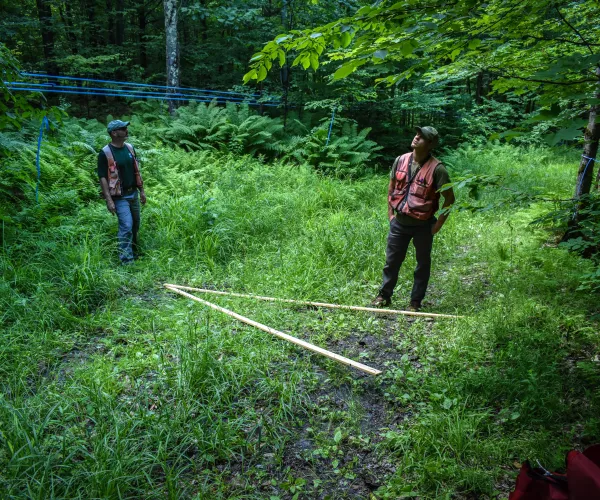Canopy Dieback
Canopy dieback is a sensitive early-warning indicator of tree stress and decline. It measures the extent to which a tree’s canopy is losing live branches and foliage, which can be caused by climate-related stressors, poor soil conditions, pests, or disease. In the context of maple production, high dieback levels can reduce sap yield and long-term tree productivity. This visualization tracks annual changes in average dieback percentages across thousands of monitored trees, offering insight into how environmental pressures are affecting canopy health and, by extension, the ecological integrity of sugarbushes across the region.
Average Canopy Dieback Per Year
The dieback chart is a line graph showing the average percentage of canopy dieback observed in maple trees each year. Dieback refers to the progressive death of branches and twigs, typically starting at the tips and moving inward. This indicator reflects the visible stress level of trees due to factors such as drought, pests, disease, or root damage. The line graph illustrates how the average severity of dieback has changed over time, allowing users to identify trends, spikes, or improvements in tree health across the monitoring period.
Key Insights
Average canopy dieback has fluctuated year-to-year, with certain years showing elevated levels that may correspond to periods of environmental stress, such as drought or extreme weather.
The overall trend remains relatively stable, suggesting that while trees periodically experience increased stress, widespread canopy decline has not accelerated significantly across the broader landscape.
Environmental Dimension
The Environmental Dimension of the Maple Sustainability Indicators Initiative explores the ecological factors that influence—and are influenced by—maple syrup production. This includes a focused effort to assess the environmental performance of maple operations using life cycle assessment (LCA) methods. By measuring emissions, energy use, and material inputs across the production chain—from sap collection through processing and packaging—our LCA work helps quantify the carbon footprint and resource efficiency of different maple syrup business models. These insights are critical for identifying opportunities to reduce environmental impact while maintaining or improving production efficiency.
In addition to life cycle metrics, this dimension evaluates how forest stewardship practices affect the sustainability of maple production. Our research considers a range of forest management approaches—such as thinning, species diversity, and conservation planning—to understand their role in long-term sugarbush health, climate resilience, and biodiversity. Together, the LCA and forestry indicators provide a comprehensive picture of how environmental outcomes are shaped by both operational decisions and landscape-scale practices. By integrating ecological science with producer knowledge, this work supports data-informed strategies for strengthening the environmental sustainability of the maple sector.
